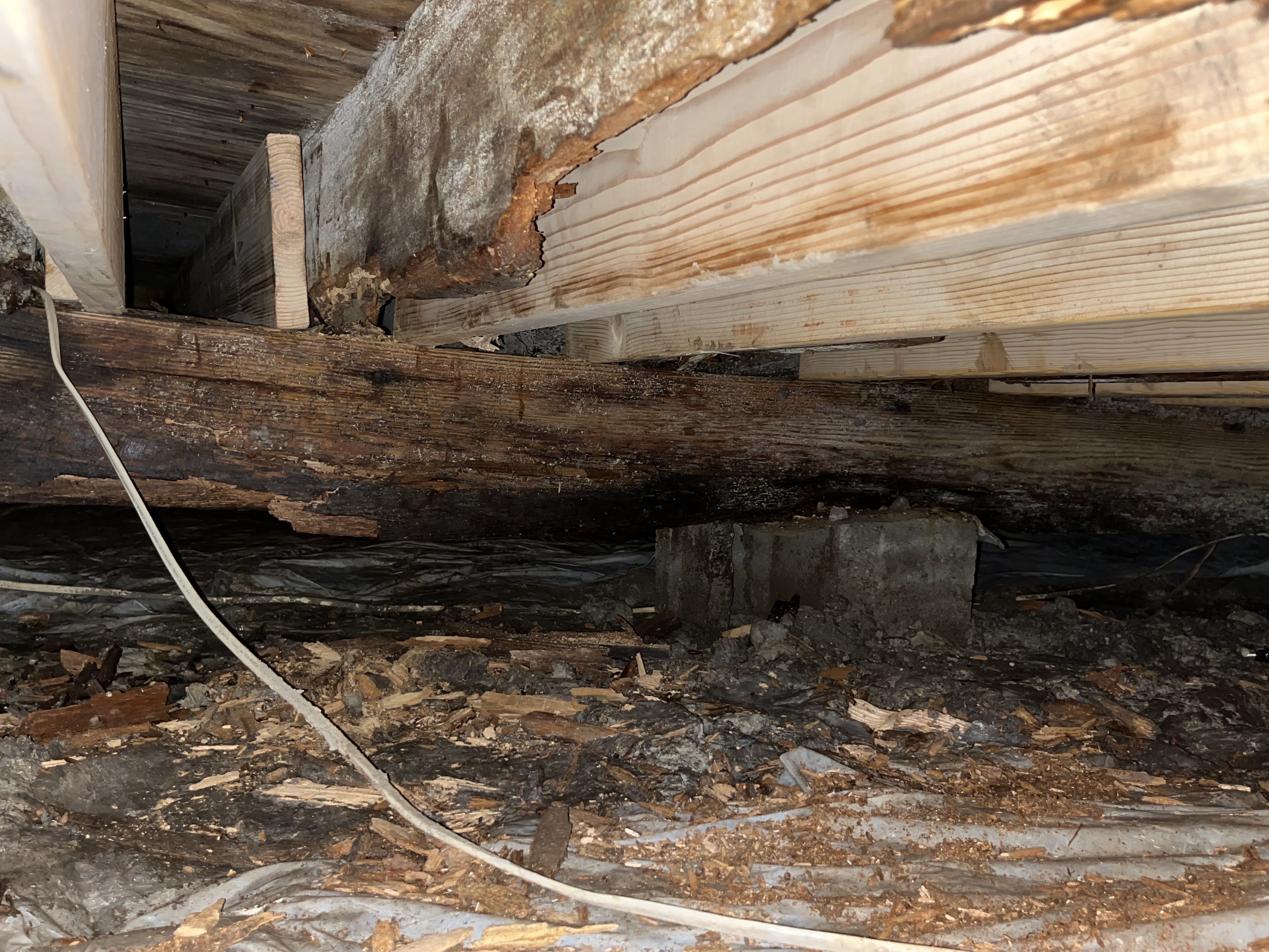
Wood rot is a fungi growth that can cause serious damage to your home and its structure. What makes it especially dangerous is that wood rot can often go undetected until it has already damaged the structural integrity of your home.
At Total Home Performance, we work to help keep your home healthy and safe. Keep reading to learn more about how to detect wood rot and the services we offer to help repair damage caused by wood rot and prevent it from happening in the future.
What Causes Wood Rot
Wood rot thrives in warm and moist areas of a home, making it common to find in your crawl space, attic, or along your exterior walls. The fungus grows slowly over time where humidity and moisture levels are high. If left untreated, wood rot can decay the subfloor and rim joists of your home, causing dangerous and costly structural damage.
Mold vs Wood Rot
Though they are both caused by fungi, wood rot and mold are not the same. Where mold can spread from surface to surface in your home, wood rot will exclusively attack its wooden materials—making it capable of causing much more structural damage once it takes hold. The presence of mold in your crawl space is often a common sign that wood rot is soon to follow as they both thrive in damp and warm environments.
Signs of Wood Rot
Knowing the signs of wood rot can help keep your home protected before the issue becomes a larger problem. When you’re trying to identify wood rot in your home, there are a few visual clues to look for, such as:
- Discoloration patches
- Missing chunks of wood
- Spongey textures
- Webs of cracks
- Fungal growth
Some other signs of wood rot to look out for can include:
Musty Smells
Strong and unpleasant smells coming from your crawl space or other damp areas of your home are one of the most common signs of both mold growth and wood rot. Both should be taken seriously before they worsen and decrease your indoor air quality or require significant structural repairs.
Bouncy Floors
If your floors bounce or bend when you are walking on them, your floor joists could be deteriorating from wood rot. In this case, it’s important to call the professionals at Total Home Performance immediately so we can inspect the damage and find the best path to a solution.
The Screwdriver Test
If the wood rot is advanced in your home, you can easily detect it by pressing a flathead screwdriver into its surface. If the screwdriver sinks into the wood with little to no resistance, it’s very likely that wood rot is present in your home.
Fix Wood Rot in Your Home with Total Home Performance
The first step to solving a wood rot problem is to evaluate and address the damage it has caused. With our crawl space repair and structural repair services, we can repair, replace, or sister any load bearing beams and floor joists. The exact amount of work necessary will depend on the extent of the damage, which is why it is important to call us at the first sign of wood rot.
To make sure that fungal and mold growth doesn’t happen again, you’ll also need to stop moisture intrusion in your home. Crawl space encapsulation, along with the use of a dehumidifier, will keep humidity and moisture out of your crawl space and safe from future problems.
At Total Home Performance, we’ve been providing crawl space and structural repair services to the Eastern Shore since 2009. Whether your home is suffering from mold growth, wood rot, or moisture issues, we can help you find a path to a solution, keeping your family safe and healthy. Our team can even help you maximize your savings with up to $7,500 in rebates for crawl space encapsulation. Call us today to get started!